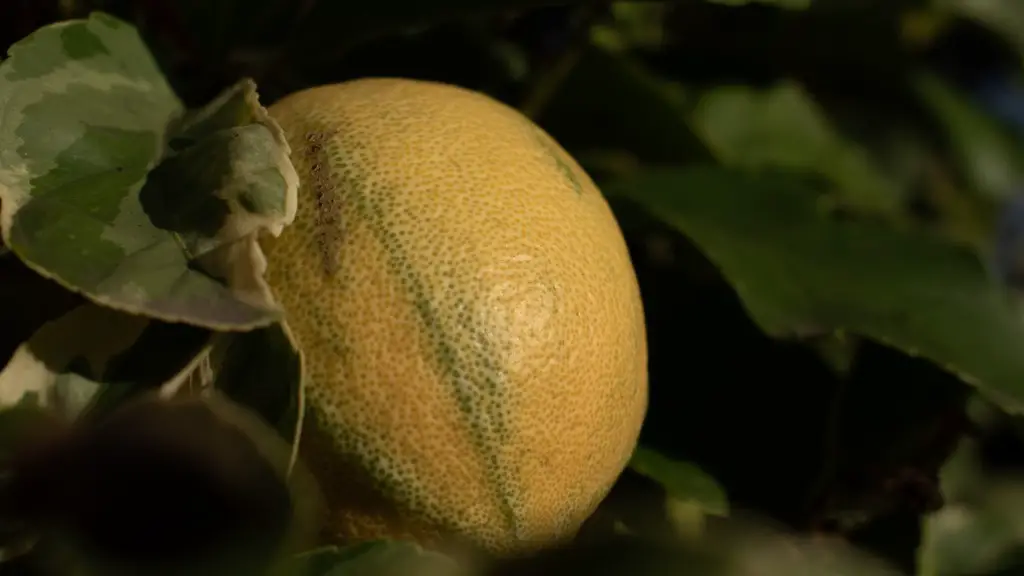Can you graft an orange tree to a lemon tree? The answer is a resounding yes. Grafting is going to be the most successful option if you want an orange tree to grow on a lemon tree’s rootstock. There are a few different things to consider when attempting to graft these two fruits onto one tree. In order for a successful graft to work, the budwood of the plant you are grafting onto must be compatible with the rootstock of the tree. You must also take into consideration the size and shape of the budwood, as it needs to fit the rootstock properly. Additionally, you need to make sure that the budwood you are grafting is related to the rootstock, meaning that the two fruits have compatible characteristics.
Different Varieties of Graft
Grafting involves utilizing different grafting techniques and methods to allow a plant to survive. The most popular grafting techniques to combine two fruits onto one tree are bridge grafting, inlay grafting, cleft grafting, bark grafting and unconventional grafting. The technique best suited to grafting a lemon tree and an orange tree will depend on the size, shape, and type of lemon and orange cultivar involved.
Bridge grafting is typically used when the two plants have wood of similar size. The compatible wood type of the two plants is cut into a “bridge” shape, then the scions are grafted onto the rootstock. If a rootstock is too big for inlay grafting but too small for cleft grafting, this technique is often used.
Inlay grafting is typically used when the rootstock of the plant is much bigger than the scion being grafted onto it. In this case, a wedge or notch is cut into the rootstock and then the compatible budwood is inserted in the notch.
Cleft grafting is a commonly used grafting method for joining compatible buds of different sizes. In this type of grafting, a scion is cut into a wedge shape and then inserted into a split in the rootstock.
Bark grafting is when a compatible budwood is inserted in between two layers of bark. This technique is best used when the stems of the rootstock and scion are completely different sizes.
Unconventional grafting is another option for grafting two different fruits onto one tree. This involves creating an incision in the bark of one tree and then inserting the compatible budwood for the other tree. Unconventional grafting is often seen as the most challenging grafting technique, and should typically be attempted by experienced gardeners.
Grafting with Care
When attempting to graft two different fruits onto one tree, it is important to take certain precautions and use the appropriate methods. When using any of the above mentioned techniques, it is important to make sure that you are using compatible budwood. Additionally, make sure that you use sharp, clean tools when cutting the wood and sterilize them after each use. Make sure to also keep the cut pieces of wood moist and protected from sun exposure until the graft is complete.
In order for the graft to take hold successfully, you will also need to monitor the established tree and remove any branches that do not form grafts. This will prevent competing branches from growing and provide the rootstock with the best possible opportunity to thrive. Additionally, it is important to make sure that the tree receives adequate water and nutrition to help the rootstock heal.
Finally, to help ensure that your graft is successful, you need to keep the tree in optimal conditions for several weeks after the graft. This includes keeping the tree in a warm and moist environment and away from strong winds. Additionally, you will need to periodically check the graft to make sure that it is not developing any cracks or holes.
Prune and Train
Once the graft has taken hold and the tree is established, it is important to prune and train the tree correctly. Pruning is an important part of encouraging and controlling the growth of the tree and its branches. Additionally, it’s important to keep the trees’ shape in check, as poor pruning practices can affect the trees’ overall health and reduce its vigor. Pruning also ensures the correct ratio of flowers and fruits to branches, making sure that the branches are not weighed down. Finally, it is important to pay attention to seasonal pruning practices, as different trees may need pruning at different times of the year.
Training is another important part of maintaining a healthy tree. Training involves bending and guiding branches so that the tree’s shape is even and aesthetically pleasing. When attempting to graft an orange tree onto a lemon tree, it is important to consider how the orange tree’s shape and size will impact the overall shape of the tree. Additionally, training can help keep the branches of the tree strong, ensuring that they are not weighed down and can easily support the extra weight of the orange tree’s fruit.
Finally, it is important to keep an eye on the rootstock of the tree and to monitor the budwood’s progress. It is important to check the rootstock regularly to ensure that it is still healthy and vibrant and to make sure that the graft is taking hold properly. Additionally, it is important to check the budwood before and after each pruning session, as improper pruning can affect the budwood’s ability to take hold.
Support the Graft
While the budwood of your newly grafted tree may take hold and thrive, it is important to provide extra support for the newly formed tree. Wrapping the graft in soft cloth or placing a plastic stake in the ground next to the graft can help support the newly grafted branch until it is strong enough to stand on its own. Additionally, keeping the area around the graft weed-free to allow for adequate airflow and sunlight is essential. Furthermore, pruning or trimming any branches that could potentially interfere with the growing scion is important.
Grafting two fruits onto one tree can be a challenging process, especially when attempting to graft two different types of fruits onto the same tree. However, if the proper precautions and techniques are taken, it is possible to successfully graft an orange tree onto a lemon tree. By utilizing the right grafting techniques, providing adequate water and nutrition to the newly grafted tree, maintaining proper pruning and training, and providing extra support, you can ensure that your graft is successful.
Synthetic Budding
Synthetic budding is another option for grafting two different fruits onto the same tree. Synthetic budding utilizes plastic bud protectors and specialized tools to expedite the process of grafting and reduce the risk of failure. The process involves inserting a bud union between the two compatible budwood and then wrapping the bud union with a plastic bud protector.
The plastic bud protector ensures that the two budwood do not come in contact with each other. Additionally, it helps to reduce the risk of infection or disease and provides additional protection against the elements. Synthetic bud protectors are typically made of polyethylene plastic and are designed to be flexible and durable.
The bud union is typically made of compatible budwood from both the scion and rootstock and is designed to hold the two buds together. Synthetic bud unions are typically made from materials such as wax, polyethylene, or rubber and are designed to provide a durable bond between the two buds.
After the synthetic bud union and protector are in place, the newly grafted tree should be given adequate water and nutrition. Additionally, the graft site should be monitored for any signs of infection or disease. If the graft is successful, the newly grafted tree should thrive and bear both fruits.
Harvesting the Fruit
Harvesting the fruit of a newly grafted tree can be a difficult process, as the fruit can often be very small and delicate. It is important to ensure that the fruit is harvested with care. To aid in harvesting, you can use specialized harvesting equipment and tools that are designed to gently remove the fruit from the tree without damaging it. Additionally, using nets to catch the fruit can help to ensure that the fruit falls safely to the ground and is not damaged.
The fruit should also be sorted and inspected for any signs of disease or infection. Additionally, the fruit should be stored in a cool and dry place and labeled accordingly. Proper storage and handling of the fruit will help to maximize its shelf life, allowing you to enjoy it for longer.
In conclusion, it is possible to graft an orange tree onto a lemon tree. By carefully selecting compatible budwood, utilizing the correct grafting techniques, providing additional support, pruning and training the tree, and harvesting the fruit with care, you can ensure that your graft is successful.




